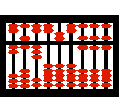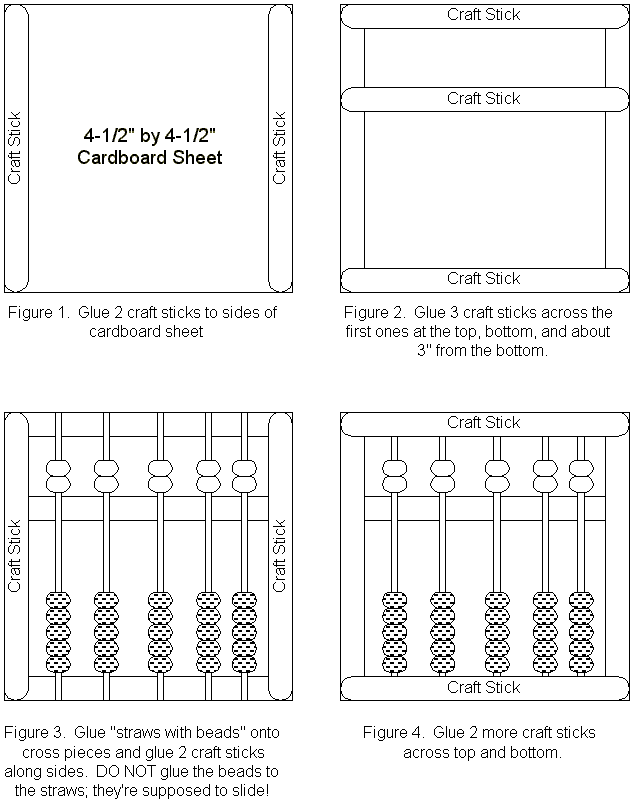ABACUS
There is no actual record of who invented the abacus, but its
appearance was first seen in a sketch book written during the Yuan
Dynasty (14th Century). It is therefore more than 600 years old.
On a Japanese abacus counting is done by pushing beads toward the
crossbar. The value of the bead is set by the rod it is on. Beads on
the farthest-right rod count 1; on the next 10; on the next 100; and
so forth. Above the bar the corresponding values are right to left,
5, 50, 500, 5000.
Make Your Own Chinese
Abacus

Have the Cub Scouts make and learn to use an abacus.
Here are some simple instructions for making a 5-digit abacus.
Materials (for 1 abacus):
- 1 cardboard sheet (4-1/2" by 4-1/2"
assumes craft sticks are 4-1/2" long; adjust size to match
size of craft sticks)
- 9 craft sticks
- 5 coffee stirrer straws
- 35 pony beads (optional: 25 of one color and 10
of another color)
Notes:
- I used a hot glue gun in making my working
model. This works well, but comes with the usual warnings on the
heat and electrical dangers around children!
- After it was all put together, I had to use
tweezers to remove the "hot glue spider webs" from
around the beads so that they could move freely.
- The "straws with beads" are just pony
beads on mini coffee stirrer straws (round ones, not flat ones).
You can get these at the grocery store. The beads are supposed
to slide on the straws so don't glue them! Also, the Chinese
abacus has 5 beads below (earth) and 2 beads above (heaven) the
middle cross bar. Also, you can make the beads different colors
for above and below the bar.


